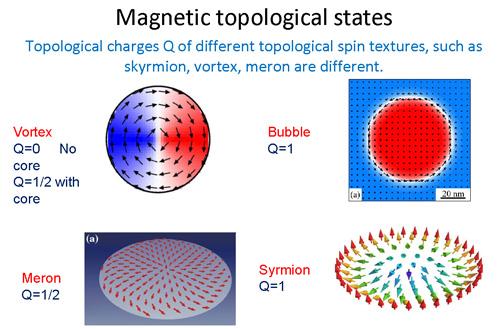Scientists have made a breakthrough in manipulating light by harnessing topological spin textures within micro-structured materials. This cutting-edge research offers new avenues for controlling the behavior of light waves at a microscopic scale, promising advancements in photonics and optical technologies. By exploiting the unique properties of these engineered materials, researchers aim to develop faster, more efficient ways to guide and process light, potentially revolutionizing communication systems and information processing.
Topological Spin Textures Unlock New Pathways for Light Manipulation
Recent advancements in micro-structured materials have opened groundbreaking possibilities in guiding and manipulating light through the use of topological spin textures. By engineering nanoscale patterns that influence the spin of photons, researchers have developed innovative platforms where light propagation can be precisely controlled without the signal loss typically associated with conventional methods. This breakthrough hinges on harnessing the intrinsic properties of spin textures-spatially varying orientations of spin-that serve as robust channels for photonic signals, unaffected by imperfections or external disturbances.
Key benefits of these engineered topological spin textures include:
- Enhanced resistance to scattering and defects, ensuring stable light transmission
- Dynamic tunability through external stimuli like magnetic or electric fields
- Compact integration potential for on-chip photonic devices
- New avenues for quantum information processing by exploiting spin-dependent pathways
| Property | Traditional Waveguides | Topological Spin Textures |
|---|---|---|
| Signal Robustness | Moderate | High |
| Defect Sensitivity | High | Low |
| Integration Potential | Limited | Excellent |
| Control Mechanisms | Static | Dynamic |
Micro-Structured Materials Enable Precise Control over Photonic Behavior
By engineering materials with microscopic patterns, researchers have unlocked unprecedented manipulation of light’s trajectory and polarization. These micro-structured materials, often fabricated through advanced lithographic techniques, introduce periodic modulations at scales comparable to the wavelength of light, creating unique pathways for photons to follow. This precise structuring enables the selective steering of light waves, enhancing phenomena such as spin-dependent propagation and enabling the robust control of photonic spin textures critical for next-generation optical devices.
Key benefits offered by these materials include:
- Directional control of light beams with minimal energy loss
- Enhanced interaction between light and matter at the nanoscale
- Robustness against defects and external disturbances, vital for practical applications
| Material Feature | Effect on Photonic Behavior | Potential Application |
|---|---|---|
| Periodic nano-grooves | Spin-selective light routing | Optical isolators |
| Chiral microstructures | Enhanced circular polarization control | Quantum communication |
| Gradient refractive index | Controlled beam focusing | High-resolution imaging |
Experts Recommend Integrating Topological Designs for Advanced Optical Devices
Recent advances in photonic technology highlight the transformative potential of topological spin textures within micro-structured materials. By engineering intricate geometries at the nanoscale, researchers can now manipulate light propagation with unprecedented precision. This novel approach leverages the robustness of topological features to enable optical devices that are immune to defects and environmental disturbances, promising breakthroughs in areas such as telecommunications, sensing, and quantum computing.
Leading experts emphasize several key benefits realized through these designs:
- Enhanced signal stability: Topological protection reduces scattering losses.
- Improved device miniaturization: Complex light paths fit efficiently within smaller footprints.
- Increased fabrication tolerance: Structures maintain performance despite imperfections.
| Parameter | Traditional Designs | Topological Approaches |
|---|---|---|
| Light Propagation Control | Limited, sensitive to defects | Robust and precise |
| Device Reliability | Moderate | High, defect-tolerant |
| Manufacturing Complexity | Lower | Higher, but scalable |
To Wrap It Up
As researchers continue to explore the intricate interplay between topological spin textures and micro-structured materials, this breakthrough paves the way for innovative approaches to manipulate light with unprecedented precision. The ability to control light propagation through engineered spin configurations not only deepens our understanding of fundamental physics but also holds promising implications for future photonic technologies, including advanced communication systems and quantum computing. With ongoing studies and expanding applications, the frontier of light control is set to enter an exciting new phase.































